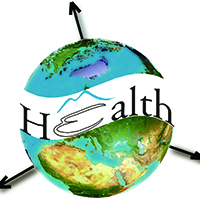Correction. Spatial cluster analysis of COVID-19 in Malaysia (Mar-Sep, 2020)

Published: 1 August 2023
Abstract Views: 702
Publisher's note
All claims expressed in this article are solely those of the authors and do not necessarily represent those of their affiliated organizations, or those of the publisher, the editors and the reviewers. Any product that may be evaluated in this article or claim that may be made by its manufacturer is not guaranteed or endorsed by the publisher.
All claims expressed in this article are solely those of the authors and do not necessarily represent those of their affiliated organizations, or those of the publisher, the editors and the reviewers. Any product that may be evaluated in this article or claim that may be made by its manufacturer is not guaranteed or endorsed by the publisher.
Similar Articles
- Adrian M. Tompkins, Luca Caporaso, Assessment of malaria transmission changes in Africa, due to the climate impact of land use change using Coupled Model Intercomparison Project Phase 5 earth system models , Geospatial Health: Vol. 11 No. s1 (2016): HEALTHY FUTURES
- Manon Pigeolet, Tarinee Kucchal, Matthew T. Hey, Marcia C. Castro, Angela Margaret Evans, Tarsicio Uribe-Leitz, Mohommad Mamun Hossen Chowhury, Sabrina Juran, Exploring the distribution of risk factors for drop-out from Ponseti treatment for clubfoot across Bangladesh using geospatial cluster analysis , Geospatial Health: Vol. 18 No. 1 (2023)
- Lorenzo Cecconi, Annibale Biggeri, Laura Grisotto, Veronica Berrocal, Laura Rinaldi, Vincenzo Musella, Giuseppe Cringoli, Dolores Catelan, Preferential sampling in veterinary parasitological surveillance , Geospatial Health: Vol. 11 No. 1 (2016): Valencia Issue
- The Publisher, Correction. Detecting space-time disease clusters with arbitrary shapes and sizes using a co-clustering approach. , Geospatial Health: Vol. 18 No. 2 (2023)
- Jonas Franke, Michael Gebreslasie, Ides Bauwens, Julie Deleu, Florian Siegert, Earth observation in support of malaria control and epidemiology: MALAREO monitoring approaches , Geospatial Health: Vol. 10 No. 1 (2015)
- Sharifah Saffinas Syed Soffian, Azmawati Mohammed Nawi, Rozita Hod, Khairul Nizam Abdul Maulud, Ahmad Tarmizi Mohd Azmi, Mohd Hazrin Hasim Hashim, Huan-Keat Chan, Muhammad Radzi Abu Hassan, Spatial clustering of colorectal cancer in Malaysia , Geospatial Health: Vol. 18 No. 1 (2023)
- Jose Antonio Quesada, Inmaculada Melchor, Andreu Nolasco, Point process methods in epidemiology: application to the analysis of human immunodeficiency virus/acquired immunodeficiency syndrome mortality in urban areas , Geospatial Health: Vol. 12 No. 1 (2017)
- Gianluca Boo, Stefan Leyk, Sara Irina Fabrikant, Andreas Pospischil, Ramona Graf, Assessing effects of structural zeros on models of canine cancer incidence: a case study of the Swiss Canine Cancer Registry , Geospatial Health: Vol. 12 No. 1 (2017)
- Carla V.V. Rollemberg, Marília M.B.L. Silva, Karla C. Rollemberg, Fábio R. Amorim, Nayanna M.N. Lessa, Marcos D.S. Santos, Acácia M.B. Souza, Enaldo V. Melo, Roque P. Almeida, Ângela M. Silva, Guilherme L. Werneck, Mario A. Santos, José A.P. Almeida, Amélia R. Jesus, Predicting frequency distribution and influence of sociodemographic and behavioral risk factors of Schistosoma mansoni infection and analysis of co-infection with intestinal parasites , Geospatial Health: Vol. 10 No. 1 (2015)
- Guillermo Albrieu-Llinás, Manuel O. Espinosa, Agustín Quaglia, Marcelo Abril, Carlos Marcelo Scavuzzo, Urban environmental clustering to assess the spatial dynamics of Aedes aegypti breeding sites , Geospatial Health: Vol. 13 No. 1 (2018)
You may also start an advanced similarity search for this article.

 https://doi.org/10.4081/gh.2023.1233
https://doi.org/10.4081/gh.2023.1233





